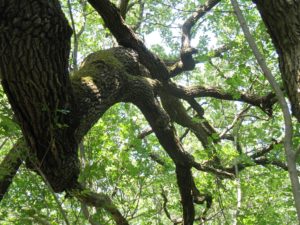General description of project area
Name of the project area: Fóti Somlyó
Surface area (ha): 93.400
EU protection status SPA: –
EU protection status SCI: NATURA 2000 Code HUDI20040
Other protection status according to national or regional legislation: Fóti Somlyó Nature Conservation Area, nationally protected
The main uses of the project site: The main land uses: Nature conservation 50%, tourism 30%, forestry 20%
The ownership status: Sate property 100%

Scientific description of project area
The project area is distinctly different from other parts of the local area, as massive, tertiary sediments can also be found on the surface, which (Pannonian sandstone, limestone) had and still has an important effect on nature. The characteristic shape of Somló Hill was formed after the withdrawal of the last Great Plain covering the (Pannonian) Sea, by the emergence of the dried up and shattered sea bed along great faults. During the Quaternary to a lesser degree loess layer deposited over the tertiary sediments (Western parts of the Hill), while sand deposited to a greater extent (around the foot of the hill and the south-eastern parts).
The area has a moderately cool climate, the average annual precipitation is around 550-600 mm from which about 340 mm falls in the vegetation period (Fóti Somlyó Nature Conservation Area – Management Plan p.11.)
Numerous lawn in the forests of island-like in relief Fóti-Somlyó Hill can be found, where a rich association of a typically Pannonian flora plant species has developed. These associations are the niche for several rare and protected plant and animal species.
Habitats of the area are 91H0* – Pannonian woods with Quercus pubescens (60%), and 6240* Sub- Pannonic steppic grasslands (10 %). About 15 % invasive Celtis occidentalis & 15 % Robinia spreudoacacia are occupying the original Quercus habitat. The botanical values are Vinca herbacea, Dictamnus albus, Adonis vernalis, Inula oculus-christ, Lilium martagon, Galanthus nivalis, Pulsatilla grandis, Astragalus vesicarius, Astragalus excapus Anthericum liliago, Orchis purpurea.
Animals of the area:
- Birds: Caprimulgus europaeus, Dryocopus martius, Dendrocopos minor, Dendrocopos major, Picus
viridis, Sylvia atricapilla, Ficedula albicollis, Sitta Europea, Certhia brachydactyla, Fringilla
coelebs, Buteo buteo, Strix Aluco - Mammals: Muscardinus avellanarius, Dryomys nitedula Reptiles: Ablepharus kitaibeli, Lacerta viridis
- Beetles: Acrida ungarica, Lucanus cervus, Carabus hungaricus, Cucujus cinnaberinus, Cerambyx cerdo,
- Butterflies: Parnassius mnemosyne, Zerynthia polyxena, Plebejus Zephirus, Euplagia quadripunctaria,
Marumba quercus, Scotochrosta pulla, Staurophora celsia, Ryleyiana fovea
.
Importance of the project area for biodiversity and/or for the conservation of the species /habitat types targeted at regional, national and EU level
The age, structure of species, the portion of dead trees of the area, the preservation of the oakhabitats and the Sub-Pannonic steppic grasslands (6240) habitat types gives the importance of the area in the aspect of biodiversity and the EU. Although the spreading of alien invasive species pose a threat to these habitats, which requires intervention
Flagship species in project area
Dictamnus albus, Lucanus cervus, Dryomys nitedula